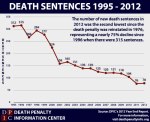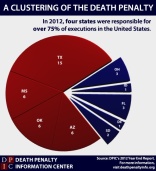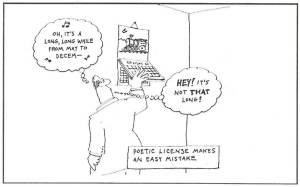Twelve Steps to Better Writing: No Barbed Wire Required
I’ve heard from some writers that they can only write when the mood strikes them and words magically flow from their fingertips onto the paper.
They say when that happens, no editing is needed; however, Truman Capote once quipped, “That’s not writing, that’s typing.” I’m in agreement. In fact, I’ve not met a single, published author who has ever said that their work comes effortlessly. In fact, just the opposite. Good writing may be a labor of love, no doubt, but with emphasis on the labor.
“Writing is like giving birth to a bale of barbed wire.” — Author Philip Yancey
It is fine to let the words flow, if they will, but then one must take time to massage the work, kneading it into a truly well-written piece. I find that editing and revising my work comes easier if I review it in twelve steps. Here are the steps that work for me:
- I review the piece first, just looking for uninteresting verbs and…
View original post 267 more words
Man In Black: The Inner Holocaust of Johnny Cash

The stage is unlit. Anticipation crackles in the air. Suddenly, a single spotlight stabs through the dark to rest on the square-set shoulders of a man dressed all in black. He shifts the guitar slung casually on his hip, flashes a boyish grin that brings his craggy face to life and declares what the audience is longing to hear: “Hi. I’m Johnny Cash.” And the crowd goes wild.
This is the public vision of Johnny Cash: the entertainer, the legend, the “Man in Black”. From the early 1960s through the early 2000s, this was the persona fans came to see, and this was the persona Cash gave them.
Beneath the glamour and hype, however, there was another Johnny Cash – the real Man in Black – a man who struggled against what he described as “the inner holocaust” of drug and alcohol addiction.
During an exclusive 1983 interview in Minneapolis, MN, Cash recounted how he first fell into drug and alcohol abuse when introduced to cheap little white pills called “bennies”. At the time, Cash explained, he had seen the pills as an easy way to increase his stamina and performing ability as he traveled the unrelenting road to success. “It’s beautiful, at first,” he said, “because there’s a demon in the bottle – a demon called Deception. There’s an old saying,” he added, “that a man drinks out of the bottle until the bottle starts drinking out of him. That’s the demon.”
Literally killing himself by degrees on a vicious cycle of amphetamines, beer and barbiturates, Cash recalled how he had raced at a frenetic pace, trying to outrun his demon, while unwilling to admit that the demon came from within. By the early 1960s, however, the demon had caught up with Cash. Even though his career soared, amphetamines and alcohol — along with Cash’s erratic, chemically-caused behavior — pulled apart his first marriage to Vivian Liberto, and had also nearly destroyed Cash’s relationship with the close-knit Cash clan.
“I had turned my back on my mother,” Cash admitted, adding that he had also taken advantage of members of his touring troupe, including June Carter, who was later to become his second wife.
“At that time, I was drinking a case of beer and taking up to 100 pills a day – uppers and downers,” he said, adding how his body bore testimony to his inner demons. “If you had a picture of me, back in 1967, you wouldn’t believe it was me. I’m 6’2”, but back then I only weighed 150 pounds”.
Plagued by twitchiness, dry mouth, chronic laryngitis and depression, his friends and family – and even his fans – recognized that Cash was in deep trouble. While the rest of the Carter Family (who toured and performed with Cash) simply tried to stay out of Cash’s way, June Carter Cash befriended, fussed over and fought with Cash as she prayed for his recovery. Nevertheless, the demon called Deception had become a closer friend and Cash refused to admit he had a problem. “A drinker or addict only cares about himself,” Cash admitted. “He’s self-centered and only cares about what others can do for him”.
In 1968, Cash reached a breaking point. Deeply depressed and loaded on alcohol and drugs, Cash decided to kill himself. He drove to a cave he was familiar with, outside of Chattanooga, Tennessee, grabbed a small, two-cell flashlight and began a slow, determined walk into the cave. His plan: to travel as deep into the cavern as the flashlight’s batteries would take him, then sit down and wait to die. “I went about a mile into the cave when the light went out,” Cash recalled.
“It was dark, black. So black you could feel it. I laid down flat on my back and said my goodbye prayers”. Alone, in total darkness, Cash gave up on life.
Then came a command: “No, you don’t give up. You’ve got things to do”.
Twittering your plan away
Online marketing is hot. You don’t need me to tell you that. But Facebooking, Twittering, Pinning and Tumblring without first planning may bring you “likes” but won’t bring results. In truth, spending your valuable time and energies “friending” your homies or creating a snazzy hom e page, without first determining whether either is a good use of your marketing time and talents, can busy your business right into bankruptcy.
e page, without first determining whether either is a good use of your marketing time and talents, can busy your business right into bankruptcy.
While we may be communicating at warp speed on social networking sites, we need to ask ourselves, are we truly connecting? And even if we were to socialize online 24/7, is what we are communicating truly accomplishing our goals? Have we even established goals?
Maybe some of the things you are doing now are useful, but without proper planning, most likely most of them are not, or at least are not as useful as they could be. Success in the use of social  media first requires establishing desired outcomes, developing key messaging and strategizing the best methods.
media first requires establishing desired outcomes, developing key messaging and strategizing the best methods.
Non-producing, unfocused Tweet hashtags and LinkedIn connections will eventually show themselves for what they are — sloppy practices that actually miscommunicate. In an article entitled “Is Social Media Sabotaging Real Communication?” Forbes contributor Susan Tardanico, says:
“Because most business communication is now done via e-mails, texts, instant messaging, intranets, blogs, websites and other technology-enabled media – sans body language – the potential for misinterpretation is growing. Rushed and stressed, people often do not take the time to consider the nuances of their writing.”
In today’s environment, we are sending communications at an ever-increasing rate, through a growing number of channels. That makes it even more vital that we have an effective  communication plan to serve as a “roadmap” that includes at the least, some goals, key messages, and evaluation strategies.
communication plan to serve as a “roadmap” that includes at the least, some goals, key messages, and evaluation strategies.
No matter how cool the latest app or social media device may be, only those who plan, track and measure—using accountability—will win customers.
My Infographic Resume
 I’m often asked how I’m able to successfully get articles or press releases published. It goes without saying (I hope) that you have an interesting subject and that you know how to write well. Beyond that, getting published is usually a matter of demonstrating that you know the rules:
I’m often asked how I’m able to successfully get articles or press releases published. It goes without saying (I hope) that you have an interesting subject and that you know how to write well. Beyond that, getting published is usually a matter of demonstrating that you know the rules:- Make sure the information is newsworthy.
Ask yourself, “How would the publication’s reader relate to this? What makes this ‘news’ to the editor’s reader?” What do inquiring minds want to know?) - The “Top Ten”.
The first ten words of your release are the most important. Take extra time to work on them. Make sure they are effective. Write these first ten words as if they were the headline; well, because they are. - Editors and reporters are busy people.
Help them do their jobs. Tell the editor why the information is intended for their readers and why they should continue to read it. - Lead paragraph.
The first paragraph needs to include a “hook,” an attention-getter that will entice a busy editor to read further, and it must contain the relevant information to your message (i.e.: the five W’s-who, what, when, where, why). - Just the facts.
Start with a brief description of the news, then follow with who is announcing it. - No fancy schmancy.
This is not the time or place to get poetic. Delete any excessive use of adjectives and fancy language. - Recap: (optional but effective).
At the lower left hand corner of your last page restate a key point or fact or date, along with your name and contact information. - Necessary elements.
Skip a line or two after release statement and then add:
- Contact Information: List the name, title, telephone and fax numbers, web address and email of your company spokesperson (the person you choose ahead of time who knows the most about the topic.) If your news release is about a late-breaking item, give a home phone number too (reporters often work after normal business hours.)
- FOR IMMEDIATE RELEASE (capitalized and without the quotation marks) should appear in the upper left-hand margin, just under your letterhead or contact information.
- Headline: Skip two lines after your contact information and use a boldface type. Your headline is not a title, it should be an action statement, using a strong verb.
- Dateline: This should be the city your press release is issued from and the date you are mailing your release.
- Use proper formatting.
This is the main body where you fully expand the message, but keep it short and follow the rules to look professional:- One page is best, two if absolutely necessary.
- Use 8 ½ x 11 white paper, with one-inch margins on one side only.
- Use a bold typeface for the headlines to draw attention, but no where else. Do NOT use underlines for emphasis.
- If carrying over to a second page, use the word “more” between two dashes and center it at the bottom of the page to let reporters know that another page follows, and add your title and page number to the top of the second page.
- Use three numbers symbols (# # #) immediately following the last paragraph to indicate the end of your press release.
- Spell check everything.
Allow your press release to sit for a while. Then read all the copy, including the headline, backward AND forward. It’s a quick way to catch errors.
Will Capital Punishment Soon be the Deadman Walking?
In the movie, “Dead Man Walking” a well-meaning nun receives a desperate letter from a death row inmate seeking help to avoid execution for murder. Though the convict is guilty of murder, over the time leading up to his death, the nun begins to empathize with the man. In the end, the nun struggles with the paradox of caring about the condemned man while understanding the utter evilness of his crimes. The movie, loosely based on a real case, is Hollywood’s version of death row and capital punishment.

Death Penalties from 1995 – 2012
When Deserved, Civil Action Protects Society
The death penalty has not always been practiced in the U.S., although the decision to impose the death penalty on people lawfully judged to have committed certain heinous crimes has a long U.S. history and approximately 13,000 individuals have been legally executed since colonial times. The doctrines of the world’s major religions describe times when the death penalty was both used and endorsed. Morals and mores change, however, and a 2013 New York Times editorial (http://nyti.ms/1ePwszs) suggests the time they are a-changin’: “More states are coming to recognize that the death penalty is arbitrary, racially biased and prone to catastrophic error. Even those that have not abolished capital punishment are no longer carrying it out in practice”.
- In 2013, Maryland became the sixth state to end capital punishment in the last six years.
- Eighteen states and the District of Columbia have abolished the penalty, and it is dormant in the federal system and the military.
- Thirty states have had no executions in the last five years.
“As it becomes less frequent,” the NY Times editorial continues, “the death penalty also becomes more limited to an extremely small slice of the country, and therefore all the more arbitrary in its application.”
Let the punishment fit the crime
Though I would rather we lived in a perfect world with neither capital crimes nor criminals, I believe letting the punishment fit the crime is an important crime deterrent. A 2003 report in the Journal of Law and Economics, claimed that every execution “decreased homicides by approximately five, and each additional sentence reduction increased homicides by the same amount….There is no question about it….there is a deterrent effect”. One has to wonder if support of the death penalty by the majority of states is just barbaric prejudice or if there is a deterrent effect that makes the law just.
Recently, U.S. District Court Judge Cormac Carney ruled that California’s death penalty system is “so arbitrary and plagued with delay” that it is unconstitutional.
According to the NY Times, the state has not had an execution since 2006, and 40% of its 748 death row inmates have been there more than 19 years. It’s likely that decision will inspire similar death penalty appeals around country.
Our laws are not perfect, and important issues regarding all citizens’ rights — even murderers — deserve constant review. In 1829, German poet and dramatist Johann Wolfgang Von Goethe said, “If we could do away with death, we wouldn’t object; to do away with capital punishment will be more difficult. Were that to happen, we would reinstate it from time to time.” Historically, life and death issues such as capital punishment, have an ebb and flow, as we struggle with difficult issues.
Keeping Time: Six Ways to Keep Track of Your Day
Though most managers understand intellectually that time is their scarcest resource, few make the effort to gain a strategic perspective on how they use their work hours. Still fewer make a regular practice of keeping track of how the priorities they say are most important jibe with the way they actually spend their day. While harnessing and managing time might be tricky, for a manager, the skill is essential for success.
“Those we label natural born leaders know how to leverage their time,” writes author Warren Blank in his book The 108 Skills of Natural Born Leaders; and yet, many of us do poorly not only in our management of time, but – in a more basic skill – our actual judgment of time. Here are six time-tested tricks to get control of that illusive ticking clock:
1. WAKE TIME: Get up 15 – 20 minutes earlier than you do now. If your day starts under great duress you have established the tone for the rest of the day. Instead, make an extra 15 minutes’ time for a bit longer shower, an energizing breakfast or a less stressful commute.
2. MAKE TIME: Schedule your daily “To-Do” list, paying special attention to making time for others. Whether a short chat with coworkers in the lunchroom or a casual stand-up meeting with those you supervise, this is as important as almost anything else you do. Taking time in your busy day to encourage others demonstrates accessibility and concern.
3. BREAK TIME: Set a “sacred” morning time for interruptions. The so-called open-door policy teaches others that you have no limits to their intrusions. Of course, emergencies can come up, but set and communicate a specific, near-sacred time each day (for example, 11 a.m. to 11:45 a.m.) as the time you are available for “interruptions”.
4. FAKE TIME: Schedule a time each afternoon where you are free for at least one hour for whatever happens. At first glance, you may think that this would be a time to kick back and relax. Interestingly, this time is usually taken up by the new and unexpected demands made earlier in the day. The value of knowing that you have saved time to catch up provides a sense of control and reduces the likelihood of getting behind in your tasks.
5. TAKE TIME: Stop your day 10 minutes early. Then, take a few minutes to reflect on what has been accomplished and what remains or goes on your “To-Do” for tomorrow (or in the future). This make things feel more under control and reduces the anxiety and worry that exhausts us at the end of the day.
6. BRAKE TIME: Rush hour involves managing your stress level during your time behind the wheel. The calmer that you are when you are behind the wheel, the easier it is going to be for you to deal with rush hour traffic. It’s a great time to practice some relaxation techniques, such as proper breathing exercises, or use the time in your car to catch the latest tunes, the evening’s news or an audio version of that best-seller you’ve been wanting to read.
To manage time, reduce stress, and feel more in control, you must organize your time and expectations so as to drive your life at a more comfortable pace, knowing and planning your time constructively and healthfully.
College Is Big Business and Should Run Like One
As a key to enhancing the future success of our nation, one of the most talked about issues during the 2012 Presidential election was how to improve the productivity and efficiency of the U.S. higher education system. It’s three years later and little is being done to fix the problem. In the meantime:
-
Among 25- to 34-year-olds, the U.S. population has slipped to 10th in the world in the percentage of those who have earned an associate degree or higher in 2008.
-
We have slipped even further to rank 14th among the 37 Organizations for Economic Cooperation and Development (OECD) and G20 countries in the percentage of 25 to 34 year-olds who have obtained a higher education degree by 2012 (Huff Post: Education).
Once hailed as one of the superior education systems in the world, the U.S. system of higher education suffers from ever-higher costs coupled with wasteful spending and reductions in perceived value.
What’s at work here, or actually, what isn’t?
Exploding tuition rates aside, the law of diminishing returns applies just as much to higher education as it does to other service industries. While it may be unwelcome to use “business” and “education” in the same sentence, all organizations benefit when they strive for innovation, efficiency, profitability and excellence .
Innovation. Stephen Harper, author of The Forward-Focused Organization says, “What worked well yesterday will be less effective today, ineffective tomorrow, and obsolete the day after tomorrow” (2013). Educational organizations must move quickly to align with healthy business practices needed to dovetail with tomorrow’s environment.
Efficiency. In the most basic sense, a business model is the method of conducting commerce by which a company can sustain itself through on-going analysis. The business model spells-out how an organization is positioned, priced, produced and promoted to efficiently make a profit in real time.
Profitability. One of the most essential traits of an effective business is the ability to make a profit. Today’s colleges are no different. To be successful, they must strive for the very best economic results possible from the resources available. That includes taking a long, hard look at every expenditure to determine if it’s still needed. In Going Broke by Degrees, author Richard Vedder suggests: “Colleges do a lot of things that aren’t necessary to their educational mission, such as housing, food service, golf courses and conference centers. All such activities should either be contracted out or entirely privatized”.
Excellence. Effective businesses strive for excellence, and yet that does not seem where most colleges are putting their attention. A comprehensive study published by the Delta Cost Project in 2010, reported that between 1998 and 2008, U.S. private colleges “increased spending on instruction by 22 percent while increasing spending on administration and staff support by 36 percent” (Ginsberg, 2011).
Higher education uses an outmoded business model that is ill-suited to today’s environment. Stephen Harper, Professor of Management at the University of North Carolina at Wilmington says:
“Creating your company’s future takes vision and guts to do what needs to be done today to create a better tomorrow”. In other words, it takes running like a business to ensure a healthy future.
Using business techniques can help assure that goal is reached.






